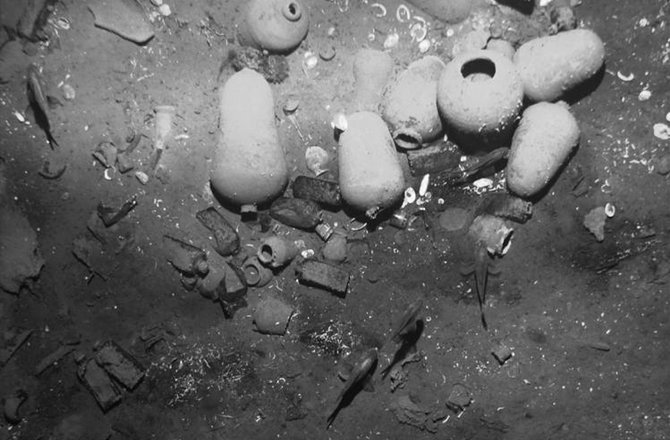
© Colombian Culture MinistryThe remains of the 18th century Spanish galleon San Jose.
Colombia has found what may be the holy grail of treasure shipwrecks — an 18th century Spanish galleon that went down off the country's coast with a treasure of gold, coins and precious stones now valued between $4 billion and $17 billion.
The multibillion-dollar ship, called the San Jose, has been at a center of a decades-long search that also involved foreign legal battles."Without room for any doubt, we have found, 307 years after it sank, the
San Jose galleon," Colombian President Juan Manuel Santos announced at a press conference on Saturday.
The shipwreck was found on Nov. 27 off the island of Baru, near Cartagena. An international team led by the Colombian Institute of Anthropology and History (ICANH) and accompanied by the Colombian navy located the wreck at a depth of about 800 feet. The remains matched details of the
San Jose reported in historical accounts.
Images brought by autonomous underwater vehicles showed dolphin-stamped bronze cannons that confirm the ship's identity. Weapons, ceramics and porcelain vases were also noted at the wreck site.
The San Jose was part of Spain's only royal convoy to bring colonial coins and bullion home to King Philip V during the War of Spanish Succession from 1701 to 1714.The vessel was trying to outrun a fleet of British warships off the island of Baru on June 8, 1708, when an explosion sent it to the bottom of the Caribbean Sea. She was reportedly carrying 600 people, chests of emeralds and tons of silver, gold and platinum.
"The heat of the blast came very hot upon us, and several splinters of plank and timber came on board us afire," English Commodore Charles Wager, who led the the four-ship squadron that fought the Spanish treasure ship, wrote.
"I believe the ship's side blew out, for she caused a sea that came in our ports. She immediately sank with all her riches," Wager said.
Ernesto Montenegro, head of the Colombian Institute of Anthropology and History, hailed the discovery as a "major triumph." He stressed that archaeologists are still in the earliest phases and multiple expeditions to the wreck are needed before any material can be recovered.President Santos remarked that all information related to the finding is secret, as the
San Jose is a state affair."
Colombia has been involved in a three-decade legal battle with the Seattle-based Sea Search Armada, or SSA, a commercial salvage company that claims it first discovered the wreck's location in 1981.
Sea Search and the Colombian government initially worked hand-in-hand, agreeing to split the value of recovered treasure.
But in 1984 the Colombian Parliament enacted a law reducing Sea Search's share from 50 percent to a 5 percent finder's fee.
In 2011, a U.S. court declared the galleon property of the Colombian state.
Under Colombian law, the treasure is now cultural heritage belonging to the nation.
President Santos said a museum will be built in Cartagena to house the findings recovered from the ship.

Reader Comments
to our Newsletter